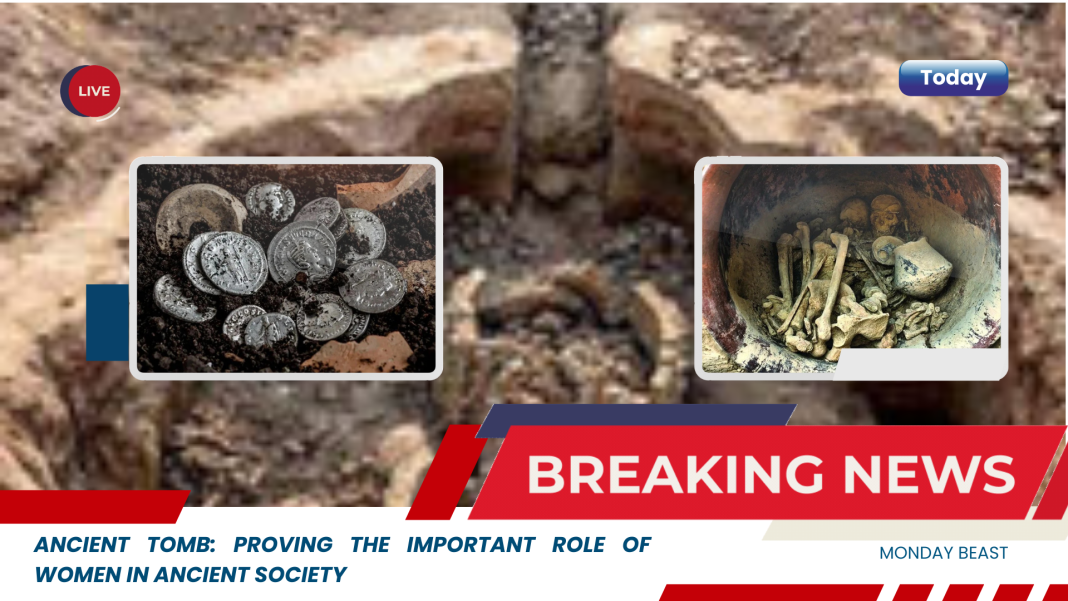The city of gold: 3,000 years of history in Egypt
Hidden beneath layers of sand, a city thought lost to time emerged in Egypt. Dubbed the ‘Lost Golden City,’ this archaeological site dates back to the reign of Amenhotep III. Located near Luxor, it reveals a vibrant past.
After seven months of excavation, the discoveries are astounding. Among the finds is a complete bakery, including ovens and storage ceramics. Archaeologists also uncovered residential and administrative areas, painting a vivid picture of life in ancient Egypt.

What was daily life like in a city buzzing with activity? The artifacts speak volumes. They tell stories of feasts, commerce, and perhaps the trials of living under Pharaoh’s gaze.
The ancient chariot of rituals in Italy
Imagine standing at the edge of history, gazing at a nearly intact ceremonial chariot. Discovered in Pompeii, Italy, this ancient vehicle calls to mind grand weddings and festivities. The craftsmanship shines through its bronze and tin structure, offering a glimpse into luxurious ceremonies.
With wooden remnants and the remains of ropes, the chariot enthralls. It raises questions about the social significance of such items. What did these chariots symbolize for the people of that era?
Culinary echoes from Pompeii: A restaurant frozen in time

The eruption of Mount Vesuvius preserved a restaurant from two millennia ago. This culinary spot, discovered in 2019, reveals tantalizing frescoes that depict dishes once served. The imagery hints at gastronomic delights enjoyed by patrons of that time.
Archaeologists even found preserved remains of pigs and fish. These discoveries showcase the range of dishes savored in ancient Italy. What would a meal looked like then? How do these ancient culinary practices mirror our own?
A Roman treasure trove discovered in Germany
In a river in Augsburg, Germany, an astonishing find awaited. Over 5,500 silver Roman coins, known as denarii, surfaced from the depths. Dating back around 1,800 years, their origin is shrouded in mystery, adding to their allure.

Some believe the coins were swept away by floods. Others theorize they were hidden by their owners. Whoever lost them, this treasure provides a gateway into the economic past of the region.
An ancient shipwreck and its Mediterranean legacy
Deep in the Mediterranean waters of Sicily, a Roman shipwreck has revealed vital trade routes of the past. It was carrying amphorae filled with wine and olive oil over 2,000 years ago. These discoveries unveil not only the ship’s cargo but also the intricate web of trade across the region.
What can we learn about the relationships and exchanges of that time? The ship serves as a vessel not just of goods, but of cultures and connections.
Unraveling the matriarchy in ancient Spain
A groundbreaking find in Spain sheds light on gender roles in ancient societies. Two skeletons, one male and one female, dating back 3,700 years were discovered side by side. Intriguingly, the woman was buried with lavish silver jewelry, while the man had simpler adornments.
Could this signify a ruling matriarch? The symbols of power attributed to the woman challenge our conventional notions of ancient leadership.
What does this reveal about societal structures? The jury is still out, but the implications are profound.
Whispers of the past in the Dead Sea Scrolls
In a haunting cave in the Judean desert, fragments of the Dead Sea Scrolls emerged, pondering ancient texts. They include writings in Greek, with divine names inscribed in Hebrew. Selected verses potentially hold significance from prophetic biblical texts.
Alongside these treasures, rare coins and ancient skeletal remains were unearthed. How do these artifacts interact with our understanding of ancient beliefs?
Roman gladiatorial contests in Turkey
In Turkey, an ancient Roman amphitheater dating back 1,800 years was found in a hillside. This colossal structure suggests a history filled with fierce gladiatorial battles. Much of it resides underground, entombed under nature’s green embrace.
It’s a stark reminder of humanity’s love for spectacle and competition. How do these ancient traditions shape our modern entertainment?
The tomb of Ptah-M-Wiah: Secrets of the Pharaohs
In the sands of Egypt, the tomb of Ptah-M-Wiah, Pharaoh Ramses II’s chief treasury official, holds captivating artifacts. It is complete with a temple and pyramid, adorned with striking carvings depicting elaborate offerings.
Such excavations give us a glimpse into the spiritual life of ancient Egyptians. What and whom did they worship? The images carved into the walls feel like a bridge connecting us to their world.
4,000-year-old Egyptian tombs: Time capsules of power
Five significant tombs, remarkably preserved for 4,000 years, were discovered in Egypt. These burial sites belong to elite officials of the ancient civilization. They contain artistic depictions and architectural wonders showcasing daily Egyptian life.
Each artifact tells a story of power and collaboration with the divine. How do these mortuary practices reflect societal values of the time?
An ancient temple dedicated to Zeus in Tell el-Farma
The ruins of an ancient temple dedicated to Zeus have captivated archaeologists in Egypt. Ongoing excavations have revealed significant inscriptions related to Emperor Hadrian’s renovations.
This site prompts us to reflect on cross-cultural exchanges and divine worship. Did Greeks and Egyptians share religious beliefs?
The elusive treasures of the shipwreck San Jose
Off the coast of Colombia, the San Jose shipwreck holds a treasure trove of gold and silver, estimated to be worth $19 billion. The Spanish treasure ship sank in 1708 during a fierce battle, leaving behind tales of greed and loss.
Who truly has claim to this fortune? The competing nations spark heated discussions about property and historical legacy.
Ruins of a forgotten Roman city in Spain
In northern Spain, remnants of a city dating back to the first century were unearthed. With no historical documentation, these ruins challenge historians. Streets, sidewalks, and drainage systems hint at urban planning of a bygone era.
What stories do these streets whisper? They radiate an air of mystery, beckoning scholars and curious minds alike.
Shackleton’s Endurance: A ship’s final resting place
In the icy depths of the Southern Ocean, the wreck of Shackleton’s Endurance was rediscovered in 2022. The ship, trapped for over a century, tells the tale of resilience and survival. Ernest Shackleton’s crew faced freezing conditions and perilous journeys.
What does this ship signify about human perseverance? Against such odds, stories of hope endure.
The secrets of Notre Dame’s ancient coffins
In 2022, archaeologists discovered two lead coffins under the goings-on at Notre Dame in Paris. Following the 2019 fire, the coffins revealed potential identities of noblemen. One was a priest, the other possibly a young knight.
What does this find say about the lives lived within the celebrated church’s walls? Time capsules hold voices from centuries ago.
The unusual dinosaur fossil discovery in Brazil
In Brazil, a 110-million-year-old dinosaur fossil called Ubirajara jubatus has unique features, showcasing a long, feather-like mane. Researchers marvel at its distinct traits. It hails from a time when dinosaurs roamed in vibrant arrays.
What can this exotic discovery teach us about evolution? Each fossil poses questions about the interconnectedness of life.
An ancient temple uncovered in Pakistan
In the town of Barikot, Pakistan, a 2,300-year-old temple surfaced. Dating back to the second century BC, it highlights spiritual practices of the past. Additional artifacts, like statues and coins, enrich this historical tapestry.
How do spiritual practices from thousands of years ago resonate today? As we dive deeper into our past, we uncover connections that bind us all.




